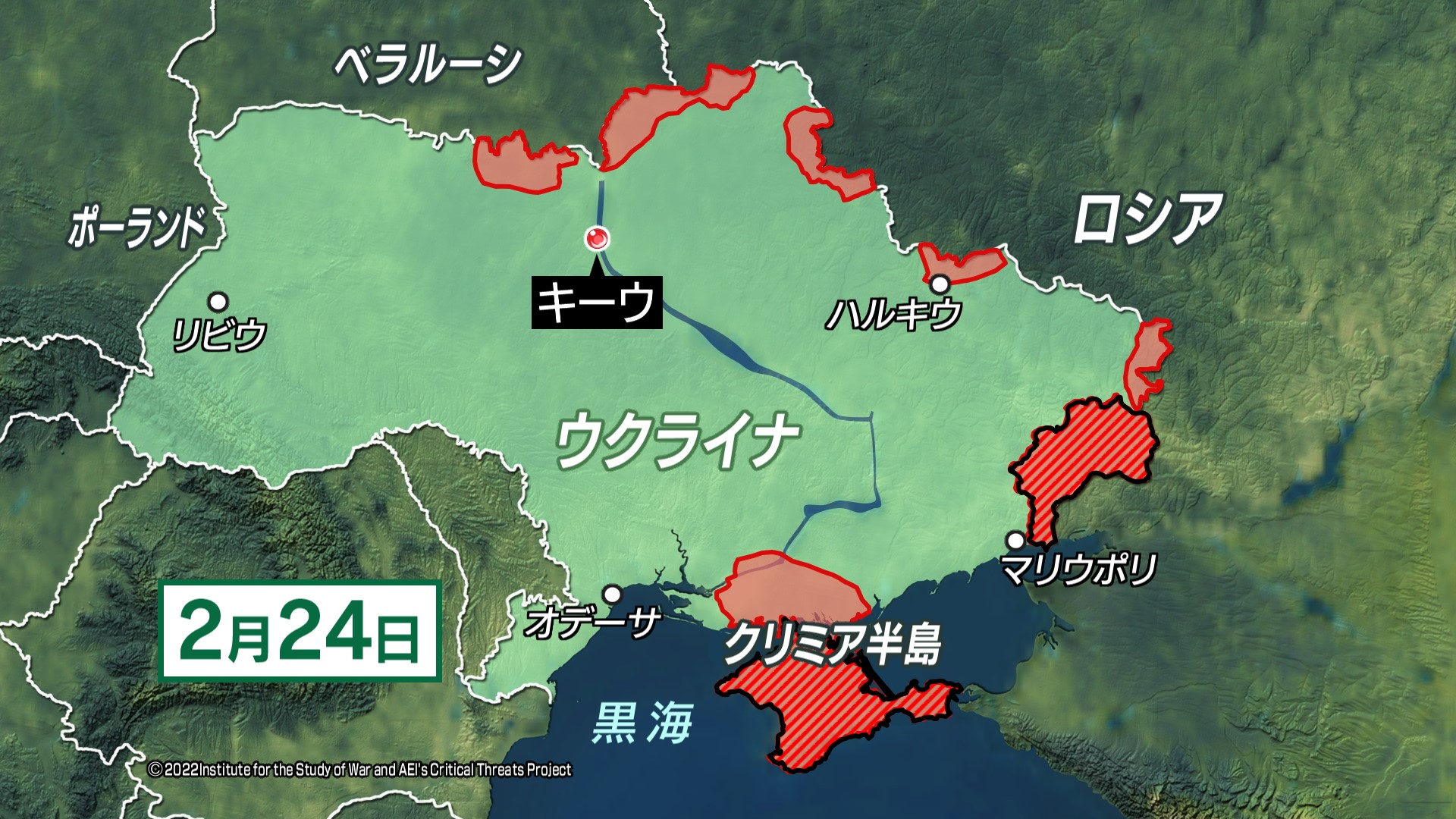In 24 days, it will be nine months since Russia began its military invasion of Ukraine.
Let's look back at the battle situation so far on the map.
On February 24, Russian President Vladimir Putin declared a ``special military operation'' to protect the residents of eastern Ukraine and launched a military invasion.
The Russian army advanced its troops towards the capital city of Kyiv through March, but amid supply problems and other problems, they faced fierce resistance from the Ukrainian army, which used anti-tank missiles and other weapons.
In late March, North Korea announced a significant reduction in military operations in Kyiv and its surroundings, and appears to have effectively abandoned the initial plan to take control of the capital and other areas at an early stage.
After the troops withdrew, the bodies of many residents were found in Bucha, near Kyiv, and other areas.
From late April, the Russian army said that it had entered the second phase of its military operations, intensifying its offensive in the eastern and southern parts of the country.
In late May, after a fierce battle at a steel mill where Ukrainian troops were based, they took complete control of Mariupol, a strategic point in the eastern Donetsk region.
In early July, although it declared complete control of the eastern Luhansk region, the war situation stalled due to resistance from the Ukrainian side in various parts of the Donetsk region.
The Ukrainian military, which received military support from Europe and the United States, such as the high-mobility rocket artillery system Hymers, strengthened its counteroffensive and announced in September that it had recaptured almost all of the eastern Kharkiv province, and showed a readiness to further liberate the territory. I was.
On the other hand, in late September, President Putin began partial mobilization of reservists to make up for the troop shortage, and unilaterally declared the annexation of four eastern and southern provinces, emphasizing the achievement.
In addition, President Putin will step up his threats to the United States and Europe, showing that he will not hesitate to use nuclear forces.
Ukrainian forces recaptured Liman in Donetsk Oblast last month and stepped up a reversal offensive in southern Kherson Oblast.
The Russian army is strengthening its defenses on the east bank of the Dnipro River and is believed to be sending the withdrawn troops to eastern Ukraine, and the fighting in the eastern part is intensifying again.
On the other hand, on the 8th of last month, an explosion occurred on a bridge connecting southern Crimea and Russia, and part of the bridge collapsed. The we.
Since then, the Russian military has repeatedly attacked infrastructure facilities in various parts of Ukraine.
For this reason, in Ukraine, the supply of electricity and other supplies continues to be seriously affected, and as the winter becomes more severe, the Ukrainian authorities and power companies are rushing to restore facilities and provide residents with alternatives. .
US military aid totals over $19 billion
The Pentagon has announced the total amount of military aid to Ukraine so far.
According to this, since Russia's military invasion began in February this year, a total of more than 19 billion dollars, or approximately 2.6 trillion yen in Japanese yen, has been provided.
Specifically, 38 high-mobility rocket artillery systems (Himars), which are said to have a long range and are capable of precise attacks, 8 air defense missile systems "Nathams", more than 104 million bullets and anti-tank missiles " 8,500 "Javelin" and 1,600 "Stinger" surface-to-air missiles.
"The United States will continue to work with allies and others to provide Ukraine with additional capabilities for self-defense," the Pentagon said in a statement.

